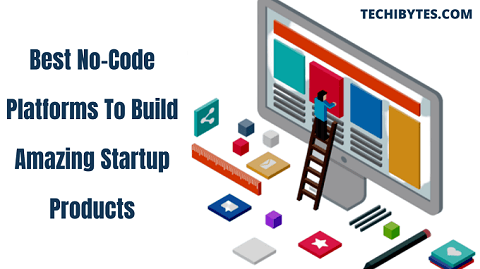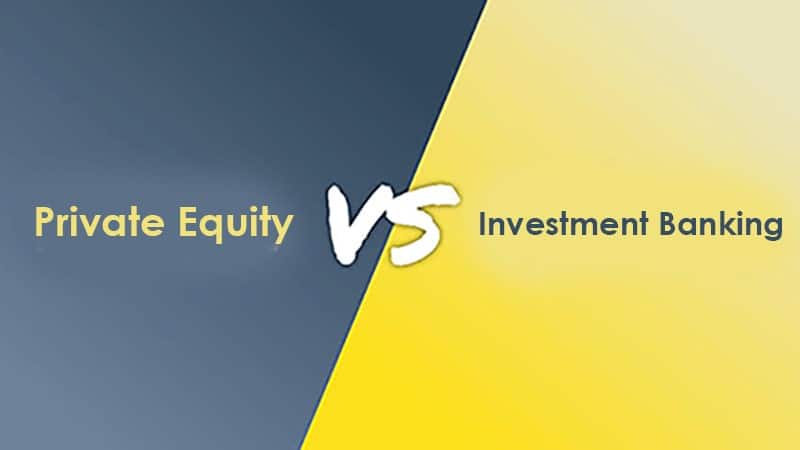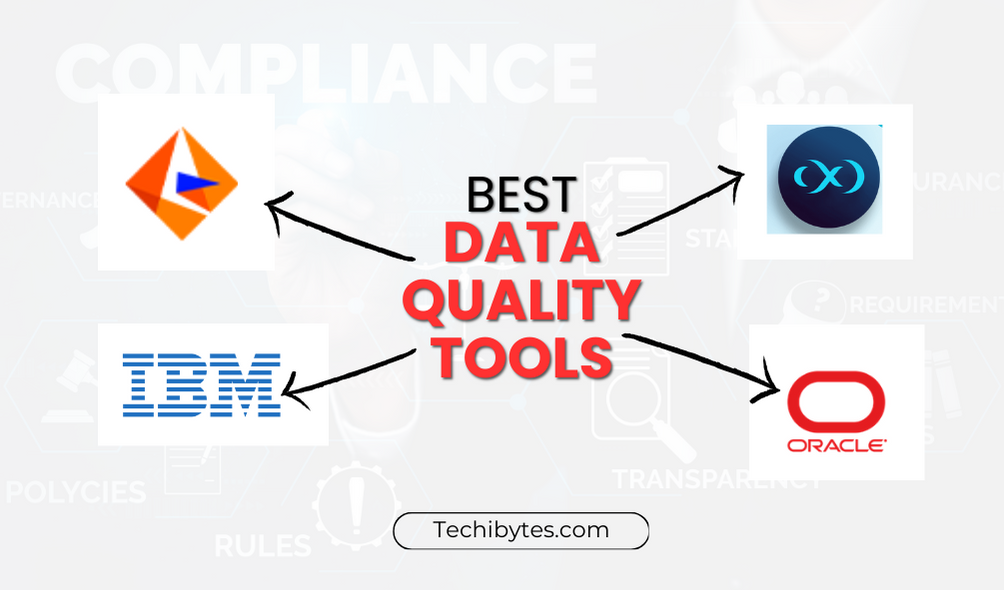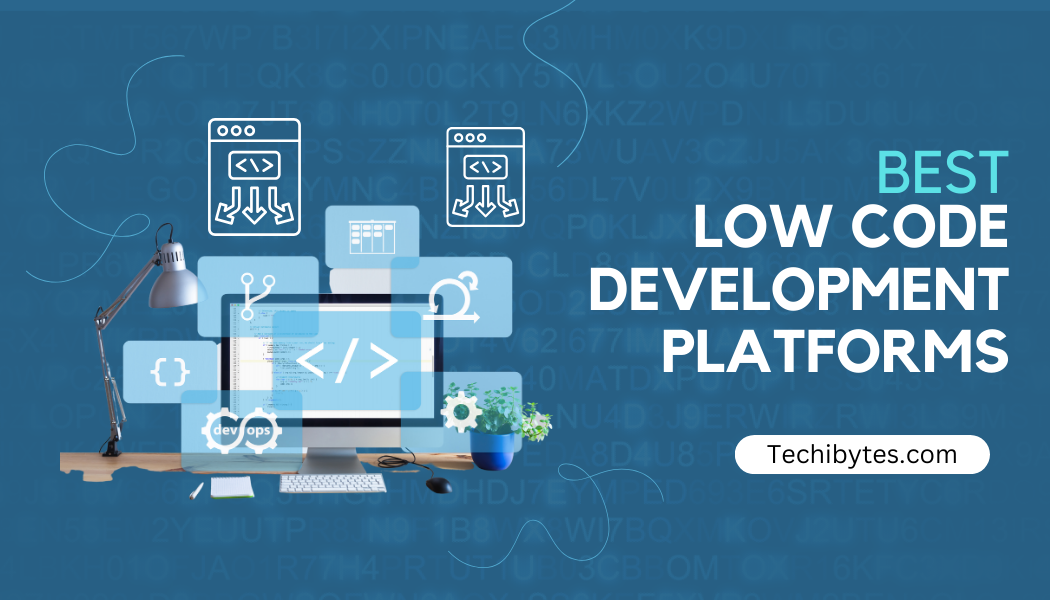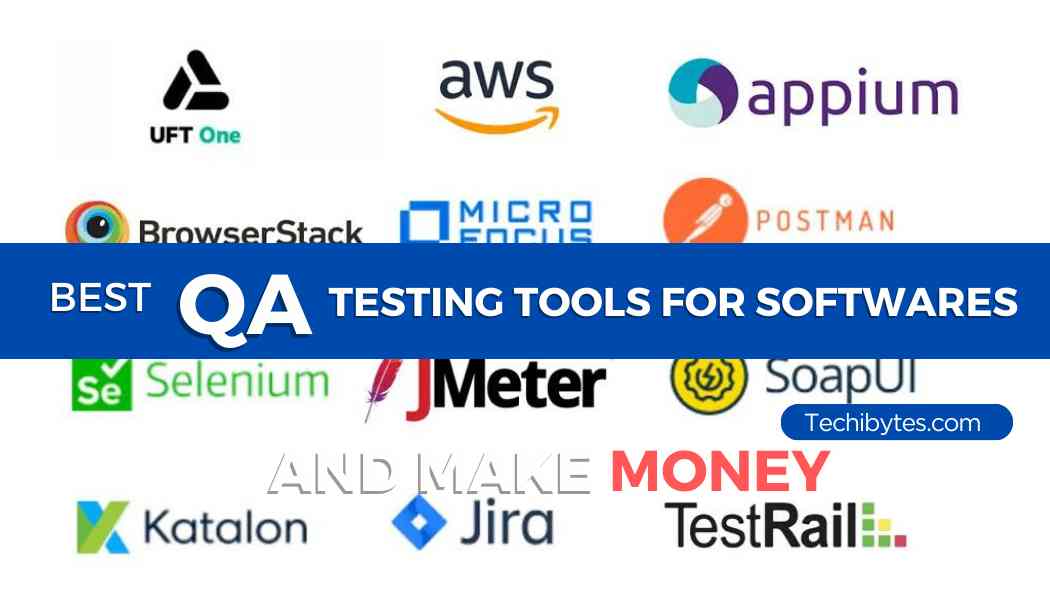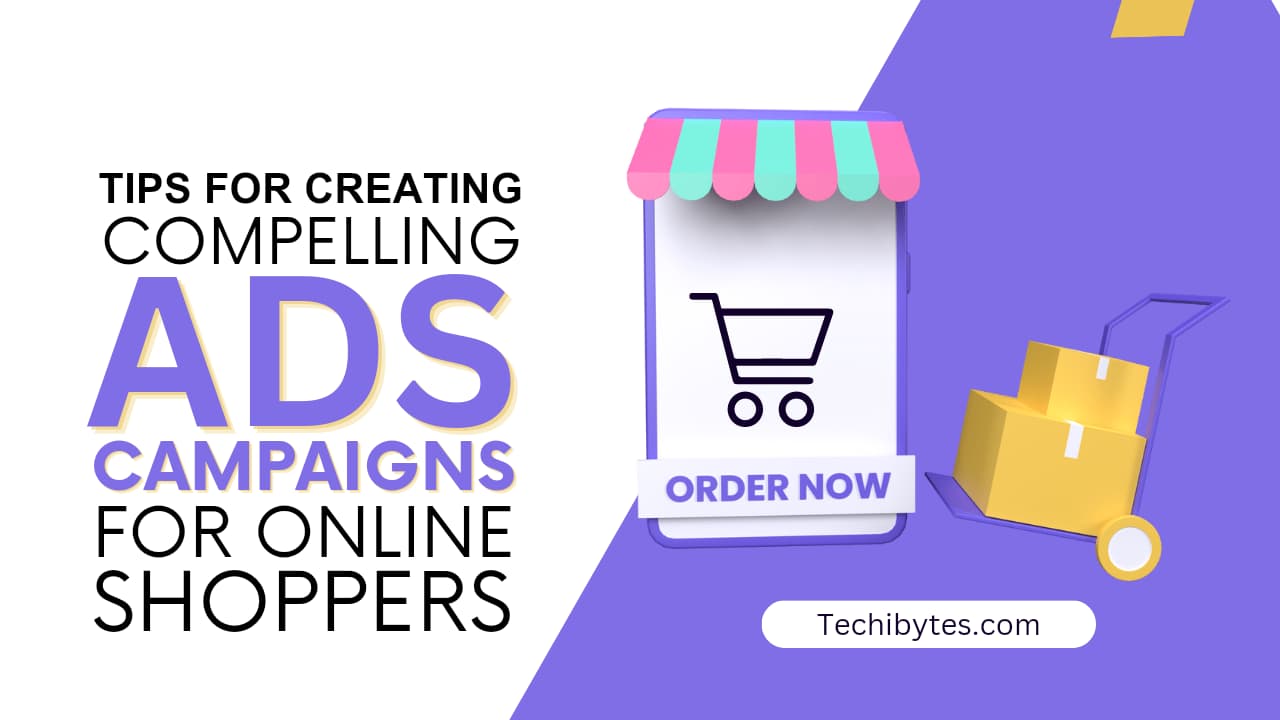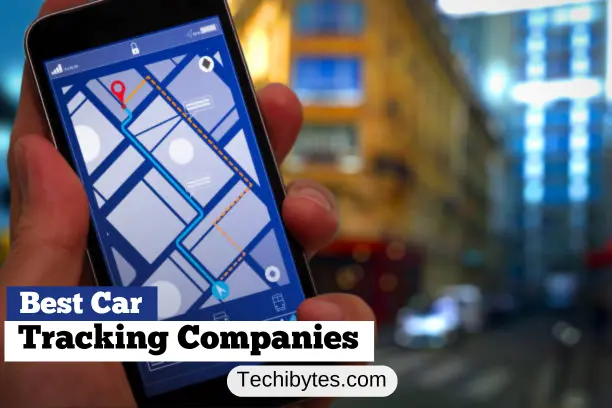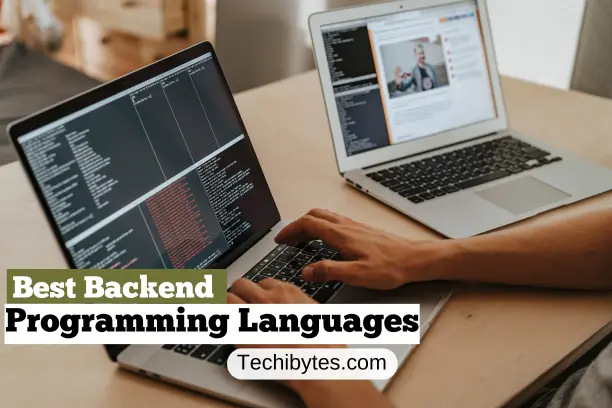No code development can be considered a promising coding technique in businesses in the millennium age when software needs increasingly surpasses the amount of code accessible.
The growth of the best No code platforms and Low-code movements worldwide has spawned a multi-billion-dollar company dedicated to making it possible for people who are not technically inclined to produce digital products. Because of the continuous COVID pandemic, an increasing number of people are turning to digital creation, be it online applications or customer platforms, online retail storefronts, e-commerce platforms, or some other type of digital platform, micro-SaaS products, or different types of digital creation – now more than ever. No-code and low-code technologies are enabling the exploration of these new horizons.
What is “no-code development.”
No-code software development is a method of creating applications that require little, if any, programming knowledge to be swiftly built. The ability to build software applications such as a form or website or add functionality to an established site or app. This will be granted to line of business (LOB) employees who have the proper institutional understanding and knowledge of an app’s company requirements but do not have programming knowledge.
Instead of decoupling programming languages and syntax from logic, no-code approaches software development to provide software quickly. In this respect, the no-code effect is analogous to low-code development. In contrast to high-code platforms, low-code platforms employ less abstraction — that is, they integrate some coding and need some knowledge of programming languages — and are frequently utilized by professional developers inside an enterprise’s information-technology department. There are different careers in tech that are no-code careers which one can leverage on.
What are the procedure for using no-code?
In some ways, the term “no-code” is misleading: as there is a significant amount of coding required, but it is done behind the scenes and is not apparent to business users. Data abstraction and encapsulation are used by no-code tool providers to effectively disguise the complexity of what users do use simple movements, such as dragging and dropping application components, to construct an application.
No-code development, like low-code development, uses a visual integrated development environment (VIDE), a software suite that contains the fundamental tools needed to design and test software. Frequently, they employ a model-driven development technique, in which a software model is used to sketch out how a software system should function before any actual coding is carried out. Once the program has been developed, it can be checked using model-based testing (MBT) before being made available for use.
What’s the actual distinction between low-code and no-code development tools?
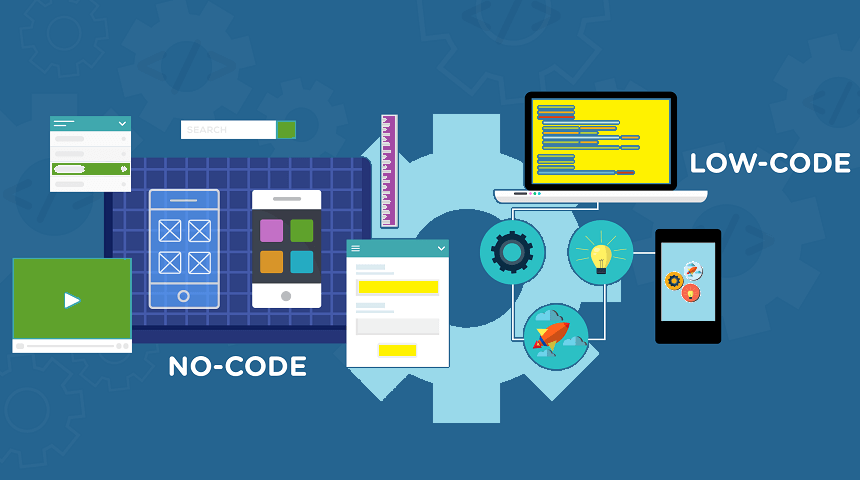
Function and ease of use are the two most significant distinctions between low-code and no-code systems, and it is preferable to think of them in terms of a spectrum. Some no-code frameworks require no coding, and only a basic understanding of program architecture and functionality is necessary for others.
The vast majority of others, on the other hand, allow so-called citizen developers or non-programmers to add some custom code to webpages to do relatively easy discrete tasks, such as adding scrollbars, navigation buttons, or custom colors to the webpages. Even in this case, no code is widely available prefabricated code snippets; these lines of code found may immediately be added to a project.
Even though no-code software blocks are easier to manipulate for non-programmers, it cannot be easy to include more sophisticated operations into them. On the other hand, IT professionals with some programming expertise may use low-code software to add those specific features to their applications. Reduced integration with old programs and increased application development, testing, and extensibility are all advantages of low-code platforms.
Low-code and no-code platforms result from past rapid application development projects, which primarily made use of object-oriented programming languages such as C++ and Java to accomplish their goals.
What are the advantages / drawbacks of using No Code for Web and Mobile App Development?
Advantages of no-code platforms
No code development allows IT to have complete control over data, systems, and functionality. Rapid application development is a notion that assists organizations in accomplishing their objectives with the least amount of resources. Some of the advantages of No-Code Application Development (NCAD) are:
• There has been little to no training. User interfaces are straightforward; you drag and drop or stack application components to create an application. Although users may require some basic training, there is no coding needed in this case.
• Reduced price. The ability to delegate fundamental functionality to non-programmers allows the organization’s information technology team to focus on more complex duties or projects that provide greater value to the organization. The company benefits from this compromise since it saves time and, eventually, money.
• Shadow IT is a constant battle. LOB users select what they require from a list of preconfigured alternatives; this means individuals are less likely to download and use illegal and unsupported programs, which may cause hassles for IT teams to hunt down and potentially expose a business to security risks.
• Businesses are expanding at a rapid pace right now. Introducing a new brand does not require a significant amount of time. It was once a process that took months or even years to complete is done in hours or days now. No code programming is one of the procedures implemented to reduce costs.
• The functionality is evolving, and the lack of code makes it more convenient. It performs admirably, especially when used with mobile applications.
Drawbacks of no-code platforms
There is no such thing as a flawless coding language. While there are numerous advantages to not having a code, it has criticisms. The following are some of the language’s most vexing problems:
- Good knowledge of the requirements of the end-users is essential.
- Templates that are too rigid restrict what you can create.
- When there is a lack of control, security risks develop.
- You do not have ownership of your source code.
- Integration of an application: The ability to draw data from other current apps may be challenging to do, depending on the low-code/no-code spectrum discussed above. Several allegedly no-code apps provide capabilities for integrating with other systems. Even these, though, need some level of programming knowledge.
- Usability is very restricted: No-code systems often do not expand to accommodate more complicated features in exchange for simplicity and convenience. To allow technically skilled customers to undertake some coding to develop more diversified customized and crucial business apps, some no-code providers include “escape hatches” and other features. Betty Blocks, for example, provides users with a split-view: Using the left side of the screen, citizen developers may drag-and-drop modules to create new applications. In contrast, coders use the right side of the screen to write programming code and access more extensive choices for developing applications.
Why Do Startups Choose No Code Development Platforms?
It is not recommended to argue against the value proposition of no-code development platforms, particularly when developing creative mobile applications for business marketing.
The startups operate cheaply and with only the most basic infrastructure. It appears to be a cutting-edge technology in their eyes. They benefit from the ease with which they can modify their apps regularly without bearing the burden of the development costs.
New no-coding development involves simple, out-of-the-box solutions that require only a few resources (hardware and software). Launching websites, automating process applications, developing web and mobile applications, and utilizing no-code platforms are examples of how startups may compete with known brands in today’s market.
Read more about building strategic branding reputaion
What can you build with no-code?
No-code is often used to produce small apps for a single function or add modest capabilities to a basic app or website that does not require programming knowledge. Examples include the following:
- Back-office applications, such as invoice processing and key performance indicator monitoring;
- Web-based applications, such as internet shopping and restaurant bookings;
- Mobile applications that allow employees to access back-office software while on the job;
- Workflow management, such as establishing internal service-level agreements to ensure that staff acknowledge completion of a project;
- Business process automation features, such as document validation from numerous parties
- Human resources functions, such as self-service features of human resource management systems, are examples.
After having gained an understanding of no-code and agreeing that it is, in fact, a breakthrough in the world of programming, we can move on. Now, let’s take a more in-depth look at the platforms and tools that were employed.
20 BEST NO CODE PLATFORMS FOR STARTUPS
No-code platforms may assist companies in various ways, including the creation of websites, the automation of workflows, and the development of applications. In no particular order, here are the 20 best no-code platforms to assist startups, freelancers, and small enterprises in creating without the need to write codes.
1. Webflow
Webflow enables you to develop any type of website without understanding a single line of code – from SaaS applications to ecommerce storefronts. With a selection of pre-designed templates and a simple drag-and-drop user interface, you’ll be able to take your website from concept to launch swiftly.
Whether you start with a responsive template or create something entirely new, Webflow provides complete customization. Additionally, if you have any coding abilities, you can always peep into the code that powers the design. Numerous Webflow authors choose to utilize Webflow as a low-code platform for truly experimenting with the possibilities. Whatever your level of experience, visual coding and development enables anybody to take an idea and convert it into a functional product.
Features
- Affordable
- The tool that is both simple and responsive
- Process of visual coding and development
- Available in a step-by-step format
- Vast template library to expedite the development process
2. Scapic
While shopping online is easy, the inability to examine a thing in person has drawbacks. When browsing items on an ecommerce site, users want as much information as possible. While photographs are useful, they do not always convey an accurate depiction. Here is where augmented reality enters the picture.
Scapic integrates augmented reality technology into your online business – no code necessary. Customers who browse your items receive a 360-degree perspective of what you have to offer; this provides consumers a far more accurate portrayal of your offerings.
Including this eye-catching augmented reality element on your company website may be what separates you from the competition. Scapic makes it simple to include this eye-catching technology into your design.
Features
- AR designs are simple to make to capture a customer’s attention.
- Attract users with creative templates
- There is no code, and the pages are simple to maintain.
- Improved user experience and a wonderful approach to enhance conversions
3. Mailchimp
Growing a small business entails expanding and comprehending your audience. Mailchimp’s platform comes equipped with everything you need to collect client data, evaluate who they are, and communicate with them.
With Mailchimp serving as one of the best no code platforms all-in-one marketing platform, you can run surveys, execute social media campaigns, and classify your consumer datasets. Additionally, they provide a variety of no-code connectors with tools like Square and LiveChat, making automation versatile and straightforward.
It’s critical to grow your client base and communicate with them, even more so in the early phases. Mailchimp’s online application streamlines and simplifies this procedure.
Features
• Interaction with other platforms is simple.
• Increased processing speed
• secure Network
4. Parabola
Data integration into automations and app connectivity might be a problem. All of this is manageable because of the Parabola. Whether it’s an API, an external database, or the complexities of ecommerce, Parabola simplifies the process of integrating and automating data-related processes using a graphical user interface.
You may organize a processor design a workflow using Parabola’s drag-and-drop features. Whether your data is kept in Salesforce, Mailchimp, Shopify, or one of the other countless platforms they offer, Parabola is a critical data management tool for your organization.
5. Voiceflow
Voiceflow enables anybody to create a speech application without writing a single line of code. Arranging drag-and-drop pieces to create a voice application provides the logic and framework for rapid application development. It’s a simple visual interface that simplifies designing speech apps for Google, Alexa, in-car assistants, and chatbots.
If you’re an ambitious app developer who desires to create a voice assistant, Voiceflow’s no-code software development platform enables you to accomplish so.
Features
• Providing extensive video editing capabilities
• The straightforward yet highly efficient voice modulation technique
6. Bubble
Additionally, no-code eliminates barriers to program development. Bubble enables you to create your application without prior knowledge of programming languages.
Bubble’s no-code app builder enables aspiring app developers to construct and deploy completely functional end products using a visual set of components. Bubble’s availability of practical modification possibilities makes it a very strong tool for application development.
Anyone can create, prototype, and publicly promote an idea with Bubble. No-code paves the path for creatives to realize their visions, regardless of their skill level.
Features
• It is a highly effective and intuitive tool.
• It includes several custom components that enhance the app’s functionality.
• Accessible at a low-cost alternative geared toward entrepreneurs
• The template collection is incredible.
• Building and adding online and mobile components is new functionality.
• Developing backend logic is significantly simpler.
7. Makerpad
You may be familiar with some of the no-code capabilities but wish to learn more. Perhaps you’d like to build something but are unsure whether anything available can assist you. Makerpad contains lessons, tools, case studies, new applications, and other resources that may help anybody locate a solution to their problem.
Along with these free tools, Makerpad offers commercial services that include education, implementation, and support for no-code firms and entrepreneurs. If you’re searching for a comprehensive collection of no-code resources, makerpad has a lot to offer.
Features
• Create interactivity and animations without writing a line of code
• Create sophisticated interactions and animations without ever having to glance at code.
8. Airtable
Airtable combines spreadsheets and databases into a single application, and is one of the best no code platforms. It differentiates itself from other business apps by providing a highly adaptable and customized solution that could be used for various purposes.
Whether you’re managing a project’s deliverables schedule, compiling a customer list, or organizing any other sort of information, Airtable makes it simple to generate and communicate. Their modular approach to creating customized tables enables you to go beyond simple spreadsheets and produce what you need.
Features
• Complex functions that are simple to utilize
• Excellent freemium option Plus reasonably priced premium option
• Customizable – can be used for virtually anything
• Can leverage a database to power a bespoke website or application that you develop
9. Coda
Coda aspires to unify your workflow. Rather than a disconnected web of spreadsheets, programs, and databases, Coda consolidates these into a single central location: a Coda doc.
Coda Packs enable the connection of documents. You can easily connect to other Slack, Google Calendar, and Jira. Coda’s building block architecture simplifies the process of developing Coda documents (complete with fun graphic embellishments!) and inter-team communication.
Features
• Periodic monitoring and feedback
• Creating a single Coda.doc from many data sources
10. Gumroad
When we speak about startups, most of us envision the vast and glamorous world of technology. However, In the digital domain, entrepreneurs aren’t restricted. Numerous people want to earn a career via their creativity.
Gumroad may be the no-code application for you whether you run a podcast, create artwork, create beats, or even wish to host your online course. This application provides an ecommerce platform for artists to sell their work, allowing them to become self-employed.
Features
• How to Create an Online Store
• Creating a workflow system for your business
• Promoting your brand through promotional activities
11. Landbot
Landbot enables you to design your chatbots and conversation prompts to assist your users. With an easy-to-follow approach, you’ll be able to connect the many components of a discussion. Additionally, you can contact your brand’s followers where they are currently conversing with the WhatsApp integration.
Features
• No-hassle conversation
• Establishes a simple-to-follow process
• Integrating WhatsApp for more efficient communication
• Utilizing the CRM tool to improve user communication.
12. Zapier
Do you have several apps that generate critical data and would want to integrate them into a single automated process? Zapier enables you to connect many application platforms, automating and accelerating your workflow.
Zapier’s automations cover a large number of commonly used business products. Twitter, Slack, Dropbox, and Shopify are just a few examples of applications that may integrate into an automated process. Zapier enables you to handle company demands with simple yet effective process automation, making it a popular no-code solution for everyone from solitary freelancers to huge SaaS firms.
Features
• Contributes to the development of automated workflow tasks
• Simple to install and integrate
• Excellent collection of free alternatives and low-cost monthly subscriptions for more complex automation.
13. Thunkable
Thunkable is a no-code application development platform that enables you to create and deploy your digital creations quickly. Thunkable’s drag-and-drop capability allows you to link various functional components to create unique user flows for your app development.
Your completed mobile application will run on both iOS and Android without the need for any additional adjustments. Thunkable’s no-code app builder includes a selection of open source projects, allowing you to construct native apps without having to start from scratch.
Features
• Easier drag-and-drop capability
• Providing an intuitive user interface
• Allows you to incorporate robust features
• Advanced features are budgeted.
14. Typeform
Typeform is an excellent/best no code platforms for creating submission forms, surveys, and lead generation. Typeform simplifies data collecting and provides an ideal user experience entirely customizable to match your brand.
Typeforms are incredibly simple to create, and with a range of form kinds – quizzes, polls, exams, and more — You can use Typeform for various purposes, including gathering feedback, doing research, and generating leads.
Typeform Professional enables you to design customized inquiry pathways and logic leaps as necessary. Creating tailored experiences for distinct personalities and consumers is more critical than ever, and Typeform allows you to do so.
Features
• Customizable inquiry pathways and logic are possible.
• Contributes to the creation of forms necessary for marketing
• Collects and organizes data in a methodical manner
15. Glide
This is one of the best no code platforms that imports data from Excel or Google Sheets and then enables you to add graphic components using a drag-and-drop interface. It is widely accessible to users with no coding skills due to the range of templates and pre-built features. And Glide does more than making your spreadsheets more aesthetically pleasing; it transforms them into robust progressive web apps.
Glide is an excellent tool for developing mobile applications for specialized internal business operations—for instance, apps for inventory management, sales pipeline tracking, and personnel directory maintenance.
Features
• A free mobile application development tool that enables customizable features.
• Construction takes substantially less time and is vastly cheaper.
• Beautiful apps that are data-driven may be produced.
16. Adalo
Adela is an incredible and straightforward and one of the best no code platforms for developing beautiful applications. Adalo-built applications are compatible with the Apple App Store and the Google Play Store. The most compelling aspect of Adalo is its simple “drag and drop” interface, which enables you to monitor the progress and design of your app in real-time. The vast community of makers is eager to share their insider secrets and tactics for creating an amazing layout.
Features
• Subscription fee of $50 each month
• Simple to use “Drag & Drop” user interface
• A sizable user community that shares advise
17. Sheet2Site
Sheet2site can change a basic Google Sheet into a fantastic website for any business, organization, or person using Sheet2Site; this is a radically new approach to website development. It’s easy to use and needs a few taps. Sheet2Site is jam-packed with images and tools, and it is well-suited to a broad array of website types.
Features
• Functionality of Google Sheets
• Low-cost
• Compatible with a wide variety of website types
18. Universe
The universe is a new website creation tool geared for artists, influencers, and designers, and also one of the best no code development platforms. The excellent aesthetics and design websites function flawlessly on older desktops and mobile devices; this is a perfect choice for well-designed websites with a distinct aesthetic flare.
Features
• Favorite of social media influencers
• Runs efficiently on a small amount of computing power
• Excellent styles
19. Squarespace
Without adding Squarespace, no list of no-code platforms would be complete. Squarespace creates websites with drag-and-drop functionality and pre-designed templates. Squarespace is a pretty secure bet used by over a million websites as its design platform. Squarespace enables you to scale your website in response to your business’s growth.
Features
• Numerous templates
• Excellent for ecommerce
• Numerous integrations
• Numerous expertise are available for rent.
20. Landen
Landen is an ideal no-code development environment for creating the internet and mobile applications. With the urgent needs of businesses in mind, it provides ready-to-use customizable templates for quickly creating a new website.
It makes recommendations on the most acceptable and most suited template for your business. Additionally, there is an easy option to upgrade the app later, which contributes to the app’s popularity.
Among the most appealing aspects are the following:
• Rapid Growth
• It is simple to browse and has drag-and-drop components.
• A low-cost no-code tool
• Enhances the usefulness of apps
Is no code the future?
No-code development has a promising future since the demand from line-of-business professionals outstrips the capabilities of IT departments to build and maintain the apps they need. The COVID-19 epidemic has worsened this problem since IT help desks are under increased demand to provide support to remote workers.
On the way to 2024, low-code applications would account for 65 percent of all application development — and citizen developers will exceed enterprise developers by a factor of at least four by 2023.
The actual quantity and direction of absolutely no-code apps, on the other hand, remain a mystery, owing to the fluidity with which the market distinguishes between low-code and no-code applications. Several low-code platforms have no-code capabilities, and some best no code platforms also provide the ability for users to customize an application using JavaScript or other programming languages.
Furthermore, analysis companies draw a fine line between no-code and low-code products. For example, a $13.8 billion market for low-code applications will be feasible by 2021, representing a nearly 23 percent increase over the previous year. This market categorization encompasses many areas, including low-code, best no code platforms, citizen advancement, robotic process automation (RPA), and other closely relevant fields.
FAQ
Are no-code apps good?
No code development is popular because it is simple and enables non-programmers to design apps or workflows rapidly. No-code is advantageous for both developers and business users and is particularly beneficial for firms with a backlog of development projects and a requirement to utilize business users as developers.
What are the best no-code platforms?
Webflow and Bubble
What is no-code software development?
No-code development is a subset of web development that enables non-programmers and professionals to create software via a graphical user interface rather than through the use of code.
What is No-code?
No-code is a method of developing and utilizing apps that do not require programming or computing language skills.
Who uses no-code?
Anybody can use no code in the line of business (LOB).
CONCLUSION
If you’re still having trouble grasping the principles of no-code development platforms, I hope this material has been helpful.
